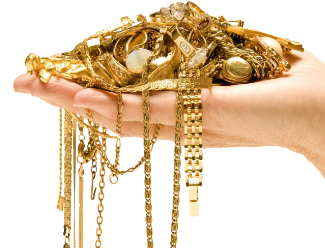Real vs Fake Gold: Simple Tests You Can Try at Home


Written by:
Dave Alpert, Owner & Appraiser – specializing in gold, diamonds, jewelry, coins and precious metals. Call to set up an appointment.
Every week, people bring us gold they’ve had tucked away for years—often unsure if it’s real or just plated. It’s a common question: “How can I tell if this gold is real before I bring it in?” While nothing beats a professional test, there are a few quick, at-home methods that can give you a clue.
Below, we’ll walk you through three simple gold tests you can try at home: the magnet test, skin test, and float test. These can help you spot obvious fakes—but they’re not foolproof. We always recommend a professional evaluation before deciding whether to sell or toss your gold.
1. The Magnet Test
Gold is not magnetic. That’s one of the easiest ways to spot imposters.
What to do:
Grab a strong magnet—like one from a hardware store or tool bench—and hold it near your gold item.
What to look for:
If your item jumps to the magnet or reacts strongly, it’s likely not real gold. Most gold-plated or gold-tone items contain metals like nickel or iron, which are magnetic.
But beware:
Some fake gold is made with non-magnetic materials. Also, clasps or fasteners might contain a tiny spring that reacts to the magnet, even if the rest of the piece is genuine. This test is helpful, but not definitive.
2. The Skin Test (a Common Misconception)
You may have heard that gold changes your skin color. That’s partly true—but also misleading.
What to do:
Wear your gold ring or chain for a few hours and watch for discoloration on your skin.
What to look for:
If your skin turns green or black, your item is probably gold-plated or mixed with a reactive metal. Pure gold doesn’t cause a reaction for most people.
However:
Lotions, sweat, and even skin pH can affect this test. We’ve seen real gold leave a mark and fake gold leave none. So, while this can raise a flag, it’s far from conclusive.
3. The Float Test
This is a quick way to spot very low-quality fakes.
What to do:
Drop your gold item into a clear glass of water.
What to look for:
Real gold is dense and heavy—it will sink immediately. If it floats or hovers, you’re probably not dealing with genuine gold.
But again:
This only helps detect extremely light fakes. Plated items or pieces with added weight can still sink. Don’t rely on this test alone.
Why These Tests Aren’t Enough
We’ve seen plenty of items pass all three of these tests—and still turn out to be gold-plated or fake upon further inspection. That’s why we always recommend a professional evaluation. When you visit us, we:
- Use electronic gold testers and acid tests
- Weigh your item precisely in grams or pennyweights
- Check for stamps and verify karat purity
- Explain everything clearly, right in front of you
There’s no pressure to sell your gold items, and you’ll walk away with accurate information either way.
Bring It In. We’ll Give You a Straight Answer.
At-home tests are a great starting point. But if you’re serious about knowing what your gold is worth—or even just whether it’s real—come see us. Evaluations are free, fast, and transparent.
📍 Visit us in Newton or Uxbridge
📞 Call ahead if you want to ask about a specific item
We buy gold in all forms—real, verified, and ready to sell. Let’s find out what yours is really worth.
